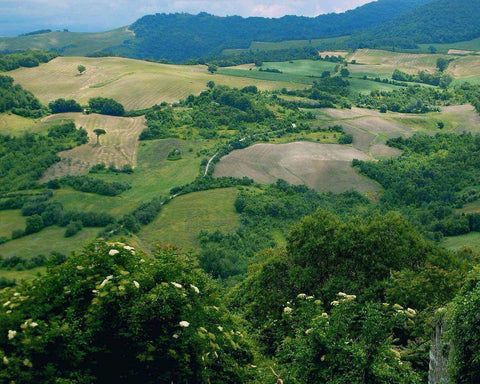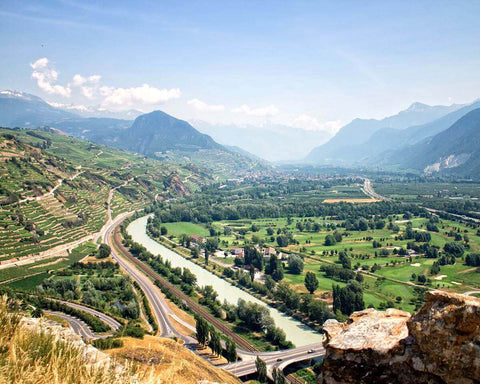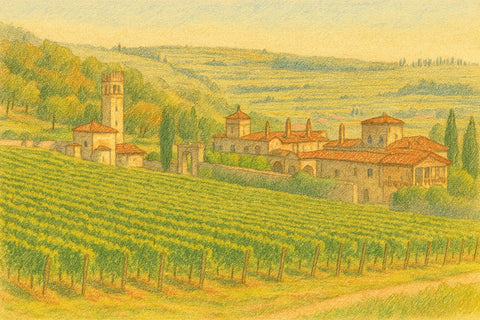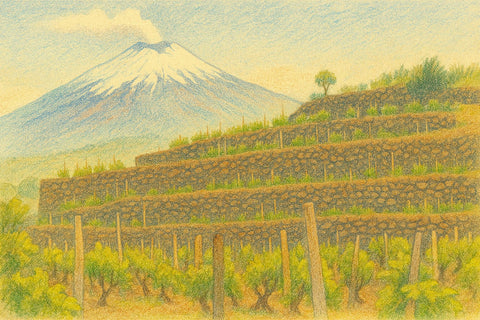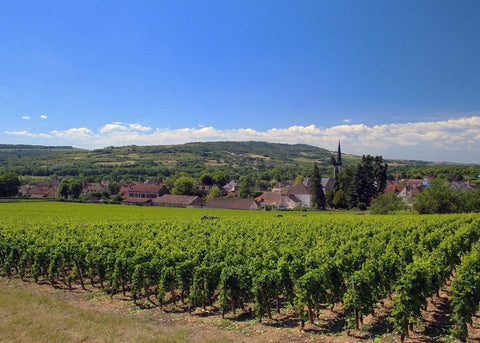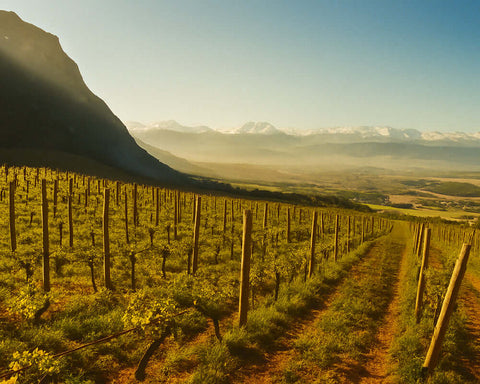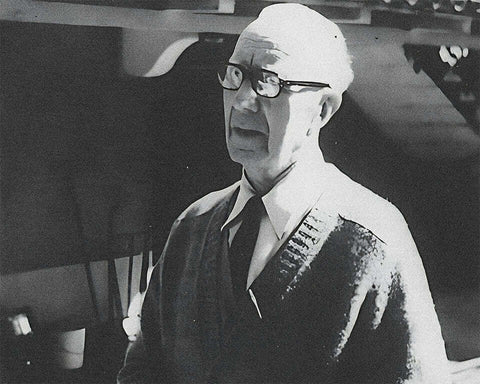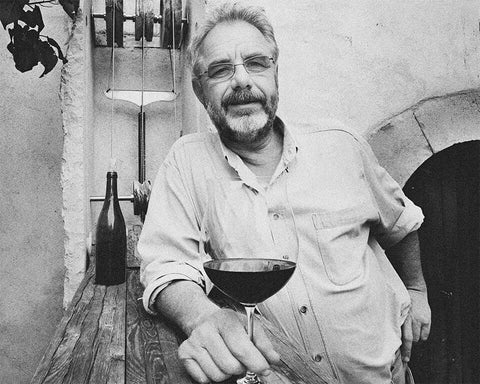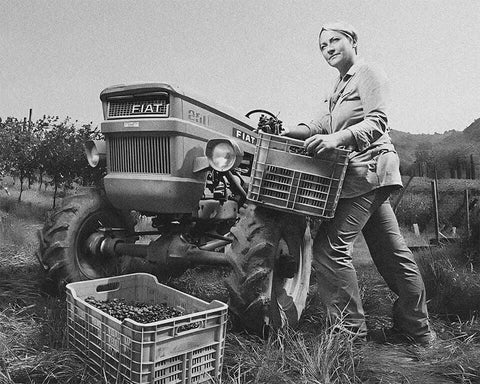Valtellina is Nebbiolo in alpine relief: chiselled acidity, fine tannins, and mineral lift from sunlit, terraced slopes. Our guide maps subzones—Sassella, Grumello, Inferno, Valgella, Maroggia—and styles from vibrant Rosso to ageworthy Superiore and Sforzato. Decode terroir, pairings, and serving tips, then explore bottles to match your palate. Any season, any table, anywhere.
Overview
Valtellina is Italy’s northernmost stronghold of Nebbiolo—locally called Chiavennasca—set in an Alpine valley in Lombardy along the Swiss border. Steep, south-facing terraces carved into the Rhaetian Alps produce singular Nebbiolo expressions defined by lift, minerality, and precision. The region’s hierarchy spans fresh, early-drinking Rosso di Valtellina DOC, the cru-driven Valtellina Superiore DOCG (with five historic subzones), and the air-dried, powerful Sforzato di Valtellina DOCG.
Terroir: Geography, Geology, Climate
Geography
The valley runs roughly 45 km along the Adda River from Morbegno to Tirano. Vineyards occupy narrow, south-facing bands between ~230 and 800 m a.s.l., achieving excellent solar exposure and significant day–night temperature swings.
Geology
Terraces sit on shallow, well-drained soils derived from granite, gneiss, and quartz. Stone-strewn parcels store and radiate heat, aiding ripening in this cool Alpine context. Centuries-old dry-stone walls (muretti) stabilize slopes and enhance drainage.
Climate
A predominantly Alpine-continental climate brings cool nights, moderate summers, and long autumns. South exposure and thermal currents promote phenolic ripeness in late-maturing Nebbiolo while preserving acidity. Local lakes and orographic effects create distinct mesoclimates across short distances.
History
Viticulture in Valtellina is ancient, with continuous cultivation documented for many centuries. The medieval and early-modern eras saw massive investment in terracing by religious and civic institutions. Recognition arrived with DOC (1968), followed by Valtellina Superiore DOCG (1998) and Sforzato di Valtellina DOCG (2003), codifying traditional practices and delimited zones.
Grapes & Viticulture
Chiavennasca (Nebbiolo)
Chiavennasca dominates and, in all key denominations, must comprise the large majority of the blend (typically ≥90%). Compared with Piedmont, Valtellina Nebbiolo tends to be paler in color, higher in acidity, and more mineral-driven, with fine, linear tannins.
Other Varieties
Small proportions of local cultivars (e.g., Rossola Nera, Pignola, Brugnola) may be used where allowed, contributing color, spice, or texture. Experimental work with heritage clones aims to enhance disease tolerance and site matching.
Heroic Viticulture
By CERVIM criteria, Valtellina is the definition of heroic viticulture: extreme slopes, narrow terraces, and near-total reliance on manual labor (often ~1,200–1,500 hours/ha annually). Vineyard parcels are small and fragmented; cableways (teleferiche) move tools and grapes but do not replace hand work. Yield limits are restrictive to protect quality.
Appellations & Styles
Rosso di Valtellina DOC
Fresh, fragrant Chiavennasca from across the valley. Expect red cherry, cranberry, rose, and a saline finish. Minimal aging requirements emphasize accessibility and gastronomic versatility.
Valtellina Superiore DOCG
Higher-spec Chiavennasca from historic slopes with longer maturation. The five subzones are:
- Maroggia – elegant, mineral, high-altitude freshness.
- Sassella – the benchmark: structure, depth, and longevity.
- Grumello – rocky profiles; firm frame and intensity.
- Inferno – warm exposures; power balanced by Alpine lift.
- Valgella – eastern diversity; styles from delicate to ample.
Riserva bottlings receive extended aging and can evolve for a decade or more, developing classic Nebbiolo notes (rose, violet, tar, sweet herbs).
Sforzato di Valtellina (Sfursat) DOCG
Chiavennasca from select sites, air-dried (appassimento) for ~3+ months to concentrate sugars and phenolics, then fermented dry. Full-bodied yet lifted, with dried cherry, fig, spice, alpine herbs, and firm tannins. Minimum alcohol and aging rules apply; the best examples cellar 15–20+ years.
Alpi Retiche IGT
A flexible indication enabling varietal or innovative wines outside DOC/DOCG rules while retaining an Alpine identity.
Winemaking
- Fermentation: Predominantly in temperature-controlled stainless steel to preserve aromatics; some estates use large neutral wood or concrete for texture.
- Élevage: Tradition favors large casks (botti) of Slavonian/Austrian oak; neutral vessels highlight terroir. Lees contact may add mid-palate weight.
- Malolactic: Common in reds to soften acidity; timing is carefully managed to retain precision.
- Style Intent: Minimal new oak; extraction kept moderate to emphasize finesse over mass while respecting Nebbiolo’s tannic architecture.
Food Pairing
- Regional classics: Bresaola; Pizzoccheri (buckwheat pasta with alpine cheese and greens); Bitto and Valtellina Casera cheeses.
- Broader cuisine: Rosso di Valtellina with grilled trout, roast chicken, tomato-based pasta; Superiore with game birds, mushroom risotto, truffle dishes; Sforzato with braises, aged cheeses, and spice-rubbed meats.
- Pairing principle: Bright acidity and fine tannins make Valtellina wines highly food-centric; match weight and intensity to the dish.
Climate & Future Outlook
Warming has improved ripening consistency yet increased pressure on terrace stability, water availability, and phenolic balance. Responses include replanting at higher elevations, restoring abandoned terraces, refining canopy and water management, and expanding organic practices. The region’s commitment to landscape stewardship is central to its long-term quality and identity.


